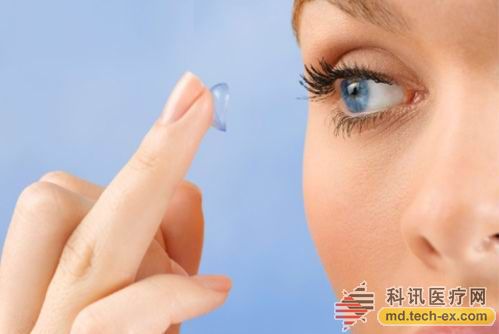Release date: 2016-02-15

With the rapid development of wearable devices, there is an urgent need for biocompatible substrates and new coating materials.
Recently, scientists at the Institute of Future Industries (FII) of the University of South Australia have developed a polymer film coating that conducts electricity on contact lenses, making it possible to create microcircuits. The researchers point out that the manufacture of such conductive coated hydrogels makes sense for future wearable electronic devices.
Published in a recent paper published in the American Chemical Society's Journal of Applied Materials and Interfaces, they deposited the conductive polymer PEDOT (poly 3,4-ethylenedioxythiophene) onto a hydrated gel matrix by vapor deposition. Mix with biocompatible ingredients. The dehydrated gel matrix is ​​subjected to plasma pretreatment to change its surface shape and chemical composition to promote adhesion of the conductive PEDOT surface layer. Controlling the gas phase polymerization process and composition, the PEDOT-based coating becomes both biocompatible and highly conductive.
Deru Evans, an associate professor at the institute, said that this is a technology that can “change the rules of the game†and is expected to bring a safe approach that will allow people to integrate more closely with smart devices. For example, the data or images from the blood glucose meter are displayed directly on the contact lens through a real electronic display screen, unlike the glasses that need to be viewed through projection.
At present, the researchers have completed the concept of the case and cooperated with a British world-renowned company that develops contact lenses. Evans said they proved that the materials work together, and the next stage is to make them stick together. After achieving this step, the next step is to expand production and develop commercial products with the UK team.
This thin film coating can also be used in other applications, including all-plastic car mirrors, electrochromic windows, smart windows, and the like. These windows will dim when pressed with a single push of a button, and will return to transparency when pressed again, controlling the amount of light entering and exiting.
Evans pointed out that what really matters is that this material is not only safe, but also has broad application potential in many individualized health monitoring. For those with chronic conditions, life can be made easier.
Editing circle
What is interesting is that if the vapor deposition method can deposit the conductive polymer onto the substrate material that the eyeball can accept, then the organ that receives the external information of the human body has the possibility of being “reformed and upgradedâ€. As a result, the seamless integration of digital content with the physical world and biological organizations will achieve a major breakthrough.
Source: Technology Daily
Small Molecule Peptides Powder
Small Molecule Peptides Powder,Collagen Peptide Powder,Small Molecule Oligopeptide Powder,Marine Collagen Peptides Protein Powder
Shaanxi Zhongyi Kangjian Biotechnology Co.,Ltd , https://www.zhongyiherbs.com